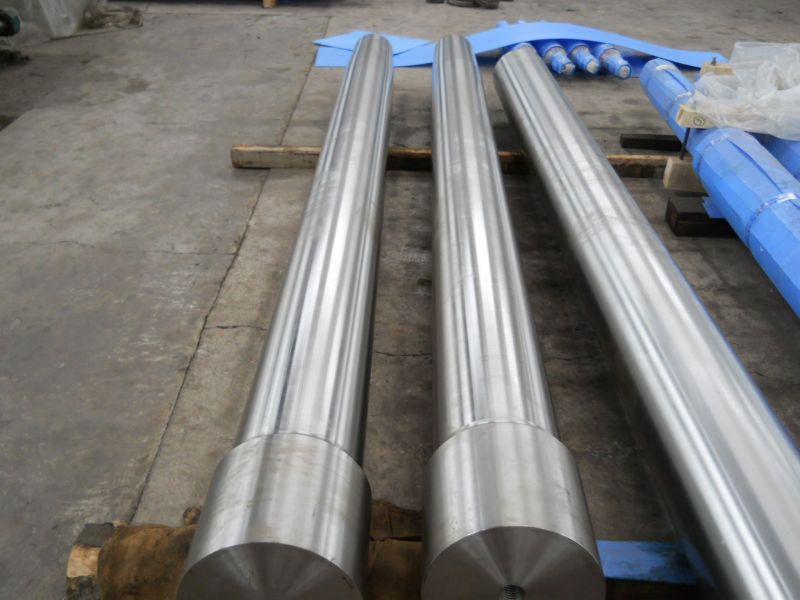The freezing process and high-temperature process are applied in many fields. For example, heat treatment process is a process that heats metal materials or their products to the required temperature, cools them at a selected speed and method, changes their internal structure, and obtains the required performance. This type of process is applied in many industrial product processing fields, but how does the piston rod undergo heat treatment? What are its heat treatment methods? Yantai Shunfa Component Pneumatic Co., Ltd. answers as follows.
The purpose of quenching and tempering treatment is to ensure that the piston rod has comprehensive mechanical properties that match strength, hardness, plasticity, and toughness well. The internal structure is a uniform and fine tempered sorbite, which is prepared for subsequent surface quenching. The long cylinder piston rod has a length of 3800-4200 and a diameter of Φ 90- Φ 110mm, therefore its heating equipment adopts a 150KW well type resistance furnace or a 600KW suspended continuous resistance heating furnace, with temperature controlled in two zones: upper and lower. Heat treatment process parameters: Four tubes are suspended in one furnace in a well type furnace, with a quenching heating temperature of 830 ± 10 ℃. After holding for 160 minutes, the tubes are quenched in two times, with two tubes quenched each time. Circulating cooling water is used to cool the tubes, which oscillates up and down during quenching to ensure uniform cooling to a greater extent. When cooled to around 100 ℃ (the rods emit steam but do not bubble), the water flows into the well type tempering furnace for tempering.
Then four tubes are heated at 550 ± 10 ℃ at a time, held for 190 minutes, and tempered before water cooling. After the above process quenching and tempering treatment, the performance is unstable, and the hardness fluctuates between 210-255HBS. There is also a significant difference in hardness between the upper, middle, and lower parts of the same piston rod. And sometimes there are individual heats with unqualified hardness or low strength that require repair treatment. Quenching deformation is relatively large, increasing the difficulty of subsequent straightening and mechanical processing. Due to the poor hardenability of 45 steel, the internal structure observed by metallography is not a single and uniform tempered sorbite, but rather a large amount of free sorbite exists in its center, and some parts also have a network of sorbite and Widmann structure.
To solve the above problems, we use a suspended continuous heat treatment quenching and tempering furnace for quenching and heating, with 2 tubes installed per tube. After heating and insulation, the furnace automatically quenches, and one tube is produced per beat to ensure uniform heating. Considering that the Ac3 temperature of 45 steel is 770-780 ℃, in order to refine the grain and reduce deformation as much as possible, we adopt 790 ± 10 ℃ intercritical quenching process to refine the austenite grain, and obtain fine and uniform Flat noodles martensite after quenching, so as to improve the strength and toughness of the piston rod. To further reduce deformation and improve the cooling uniformity of the quenching solution, we added 5% -10% quenching additives to tap water. During quenching, we also used a circulating water pump to force the cooling solution to circulate for cooling. Tempering is still heated at 550 ± 10 ℃, with the same quenching rhythm as before. After tempering, it is cooled by water to avoid the occurrence of the second type of tempering brittleness. After the above process improvement, the internal structure is uniform and fine tempered sorbite, with the removal of large or reticular ferrite and Widmann structure, resulting in uniform and stable hardness and strength.
Contact us today to learn more about how we can support your operations and help you achieve your production goals, mail sales10@welongmachinery.com.
Post time: Sep-05-2023





